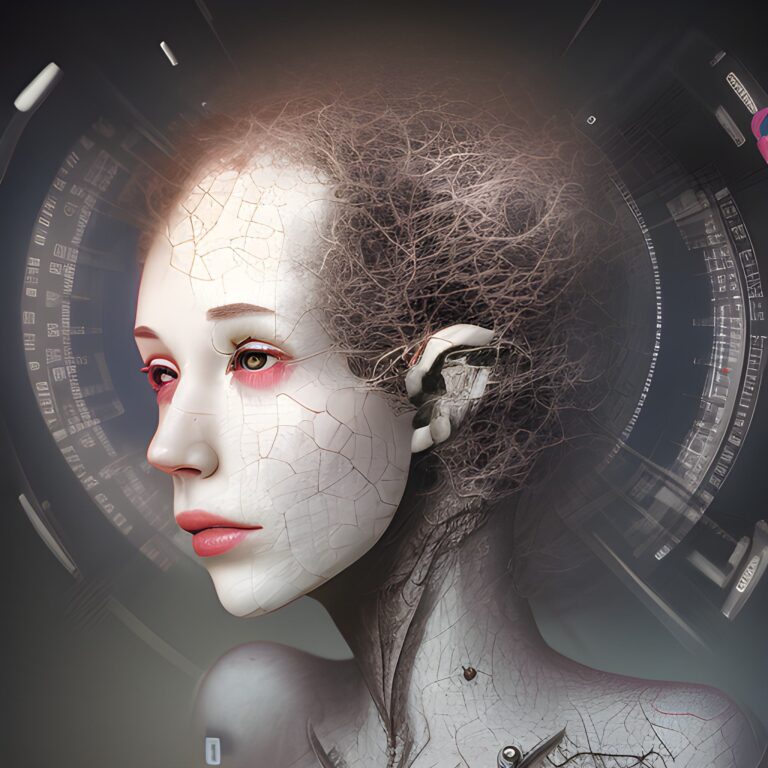Web LLM: A Game-Changer in AI Accessibility and Privacy for All

Web LLM: A Game-Changer in AI Accessibility and Privacy for All, deepleaps.comIn a world where language models are taking the internet by storm, a groundbreaking project known as “Web LLM” emerges to revolutionize how we interact with AI assistants. By bringing language model chats directly to web browsers, Web LLM liberates users from server support and offers an unparalleled experience, all while maintaining privacy and harnessing the power of GPU acceleration.
As the generative AI and LLM landscape flourishes, fueled by open-source initiatives like LLaMA, Alpaca, Vicuna, and Dolly, we find ourselves on the brink of a new era in AI development. But let’s face it – these models are often resource-hungry, demanding vast computational power. Web LLM sets out on a bold mission to bring LLMs straight to the client side, allowing them to run directly in web browsers. This extraordinary feat has the potential to slash costs, boost personalization, and fiercely guard user privacy.
Enter WebGPU – a cutting-edge technology that empowers native GPU execution in browsers. With WebGPU, Web LLM’s ambitious vision becomes a reality. But, as with any pioneering project, there are mountains to climb. Challenges such as adapting to an environment devoid of GPU-accelerated Python frameworks, building from the ground up, and meticulously managing memory usage lie ahead.
Fear not, for the Web LLM project not only conquers these obstacles but also unveils a repeatable, hackable workflow that fosters seamless development and optimization of models. How, you ask? By capitalizing on the power of machine learning compilation (MLC) and the open-source ecosystem, including the likes of Hugging Face, LLaMA, Vicuna, wasm, and WebGPU. And let’s not forget the crucial role played by Apache TVM Unity, a trailblazing development in the Apache TVM Community.
A multitude of ingenious techniques, such as TensorIR, heuristics, int4 quantization, static memory planning optimizations, Emscripten, and TypeScript, have been employed to create a thriving environment for deploying LLM models.
The dynamic nature of LLM models, which rely on computations that expand with the size of tokens, is gracefully handled by leveraging first-class dynamic shape support in TVM unity. This allows for the static allocation of all essential memory for the sequence window of interest, sans padding.
As WebGPU matures, the project’s runtime presents myriad opportunities for further optimization and enhancements, such as fp16 extensions. With continued development, we can expect the gap between WebGPU runtime and the native environment to close, unlocking a whole new world of possibilities.
So, are you ready to witness the future of AI in action? Visit the demo page to experience Web LLM for yourself. And if your curiosity is still not satisfied, explore Web Stable Diffusion on GitHub for even more groundbreaking innovations.
https://github.com/mlc-ai/web-llm
{
"seed": 325653568,
"used_random_seed": true,
"negative_prompt": "",
"num_outputs": 1,
"num_inference_steps": 75,
"guidance_scale": 7.5,
"width": 512,
"height": 512,
"vram_usage_level": "high",
"sampler_name": "euler",
"use_stable_diffusion_model": "Dreamshaper_3.32_baked_vae_clip_fix",
"use_vae_model": "vae-ft-mse-840000-ema-pruned",
"stream_progress_updates": true,
"stream_image_progress": false,
"show_only_filtered_image": true,
"block_nsfw": false,
"output_format": "jpeg",
"output_quality": 75,
"output_lossless": false,
"metadata_output_format": "json",
"original_prompt": "Web LLM: A Game-Changer in AI Accessibility and Privacy for All, deepleaps.com",
"active_tags": [
"Beautiful Lighting",
"Detailed Render",
"Intricate Environment",
"CGI",
"Cinematic",
"Dramatic",
"HD"
],
"inactive_tags": [],
"use_upscale": "RealESRGAN_x4plus",
"upscale_amount": "4",
"prompt": "Web LLM: A Game-Changer in AI Accessibility and Privacy for All, deepleaps.com, Beautiful Lighting, Detailed Render, Intricate Environment, CGI, Cinematic, Dramatic, HD",
"use_cpu": false
}







